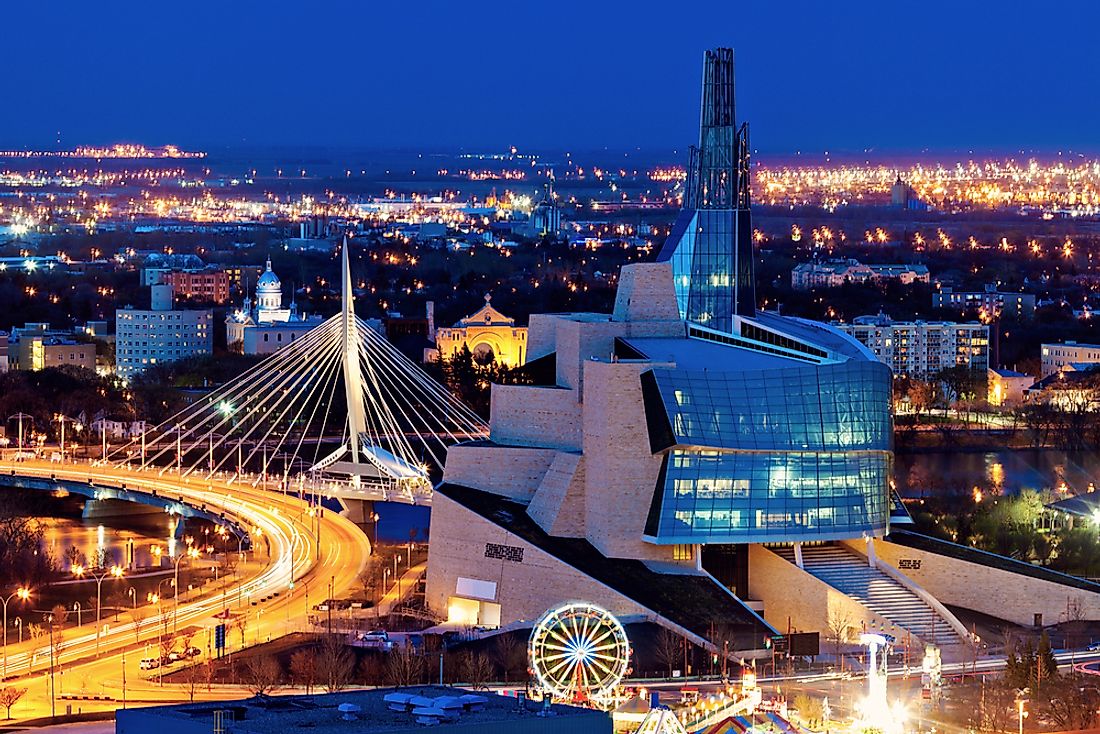What Is the Capital of Manitoba?

The capital of Manitoba is Winnipeg.
Geographic and Economic Importance
Winnipeg is the capital of Manitoba which is the fifth most populous province of Canada. Winnipeg is situated near the longitudinal center of North America. Since it is in the middle of Canada’s land mass, all rail and road traffic between Canada’s East and West passes through or near the city. Therefore, the city is also called the “Gateway to the West”. Winnipeg is a rail and road transportation hub and has a diversified economy. Winnipeg's largest employer is the government and related organizations. The city has notable trading and manufacturing activities as well as a Royal Canadian Mint coin producing plant. The city is located around the meeting point of two rivers, Assiniboine and Red River. Winnipeg is named after the nearby Lake Winnipeg, which is Canada's fifth largest lake. The city was incorporated in 1873, however, it saw its population boom only after completion of railway through the city. There are many lakes near Winnipeg including Lake Manitoba and the Lake of the Woods.
Cultural Cradle of Canada
Winnipeg is also termed as the "cultural cradle of Canada". The city is home to the Royal Winnipeg Ballet and the Winnipeg Symphony Orchestra. The city hosts one of the world's best fringe theater festivals. Every year since 1970, Winnipeg has been holding annual Festival du Voyageur to highlight stories of travelers, Métis and First Nations. The city is home to about half of province’s population.
Tourist Attractions
Winnipeg’s main tourist attraction is The Forks. This venue was used by the early Aboriginal traders, European fur traders, Métis buffalo hunters, Scottish settlers, riverboat workers and railway pioneers. Presently, this venue is used as a public space for celebrations and recreation. The Forks Market has several stores and river walkways.
The Canadian Museum for Human Rights is located in the downtown core. The museum has the “Tower of Hope” which provides an amazing city view. The city’s Exchange District has several stunning 20th century buildings. The Fortwhyte Alive, a 640 acres of prairie land within the city presents the bison (North America’s largest animal) in its natural habitat. The Manitoba Museum pleases one and all by its many natural history exhibits, planetarium shows and Canada’s most important historical artifacts (in the Hudson’s Bay Company Museum Collection). Winnipeg Art Gallery, which is located within the downtown core, showcases internationally acclaimed collections. A visit to Royal Canadian Mint may offer you an opportunity to hold a gold bar, see Olympic gold medals made for Vancouver 2010 games, and coins being made for many countries (not just for Canada). The Assiniboine Park Zoo, located within Winnipeg's oldest park, Assiniboine, showcases flora and fauna with an emphasis on Northern latitudes. The oldest cathedral in western Canada, St. Boniface Cathedral, is located in Winnipeg. For those in love with shopping, there is Johnston Terminal, a three-storey historic building full of shopping and dining options.







